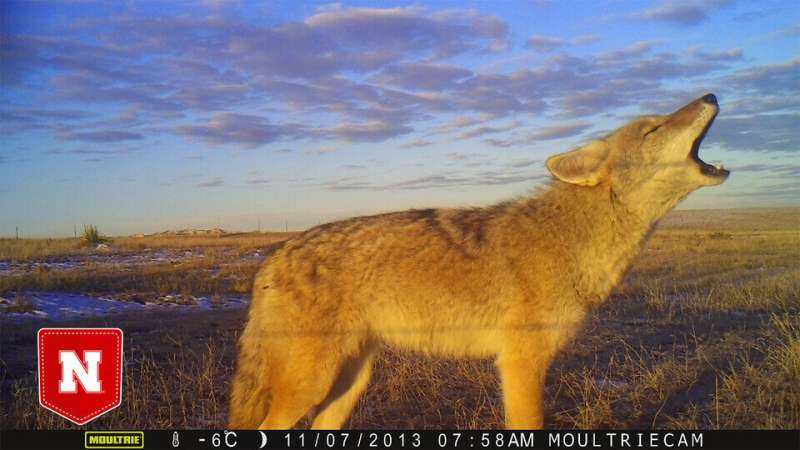A coyote captured by a camera trap in western Nebraska. Credit: Nebraska Canid Project / Nebraska Cooperative Fish and Wildlife Research Unit
Since the early 1900s, ecologists and conservationists have glimpsed wildlife via camera traps: temporary photo stations that capture evidence of whatever animals wander by. As a low-investment and unobtrusive technique, the camera trap has increasingly informed efforts to estimate the prevalence and geographic range of species, especially the elusive and endangered.
Researchers account for sources of error that threaten the validity of population estimates based on camera trap sightings, particularly error that might lead to underestimates of rare species. But little attention has been paid to how weather and elapsed time may affect those sightings.
Using more than 5 million photos captured by skunk-scented camera traps across western Nebraska, Anastasia Madsen and colleagues compared coyote sightings with weather conditions—barometric pressure, wind speed, precipitation, temperature—when the photos were snapped. The team found that each condition correlated with the likelihood of capturing coyotes on camera. That likelihood also dropped precipitously, to nearly zero, after just 24 hours.
Factoring in seasonal trends and weather forecasts when placing camera traps could improve population estimates and the conservation plans drawn from them, the researchers said. Relocating scented camera traps sooner could also refine spatial models by expanding study ranges without sacrificing validity.
Credit: Nebraska Canid Project / Nebraska Cooperative Fish and Wildlife Research Unit
More information: Anastasia E. Madsen et al. Weather and Exposure Period Affect Coyote Detection at Camera Traps, Wildlife Society Bulletin (2020). DOI: 10.1002/wsb.1080
Provided by University of Nebraska-Lincoln

























